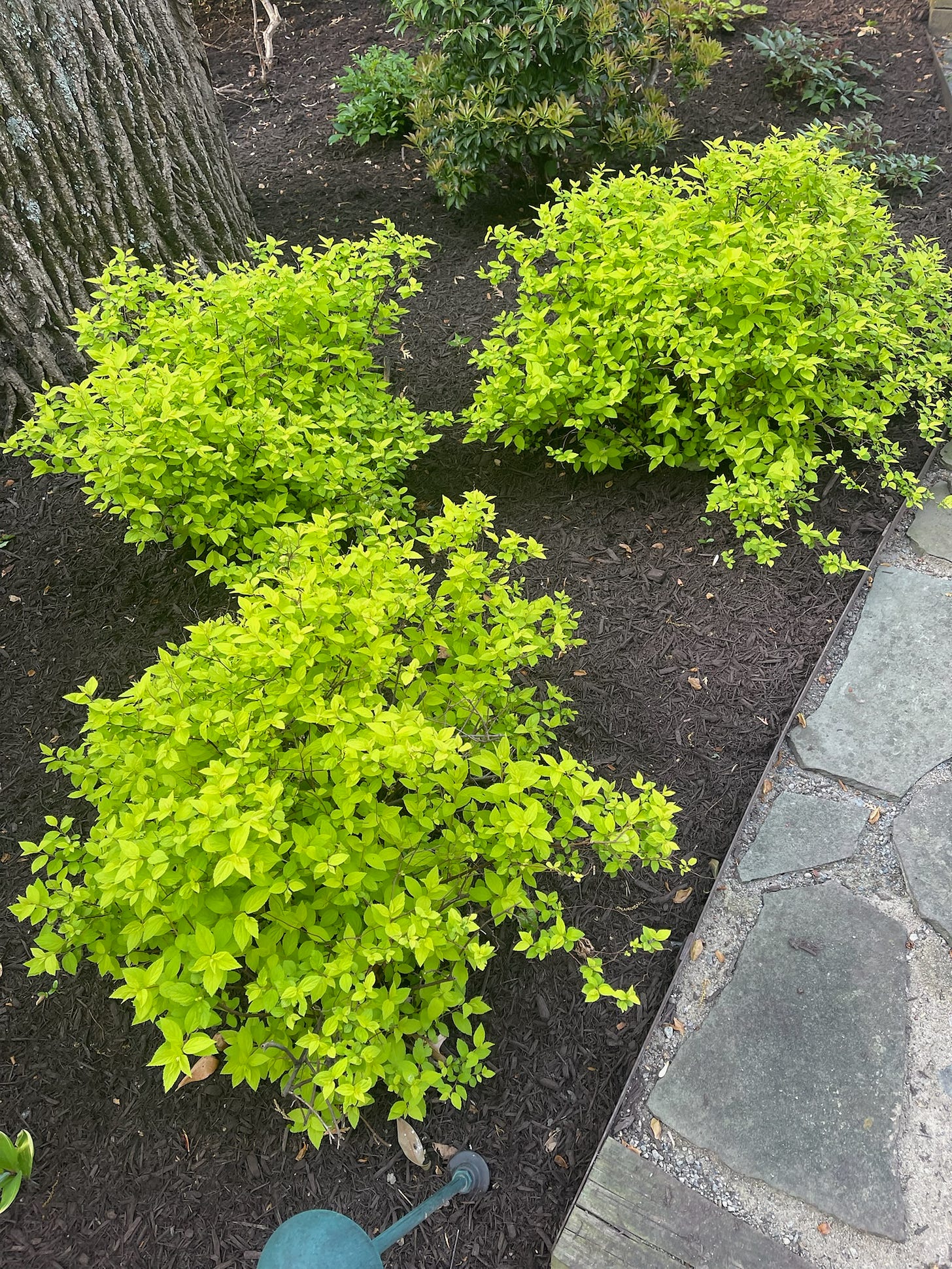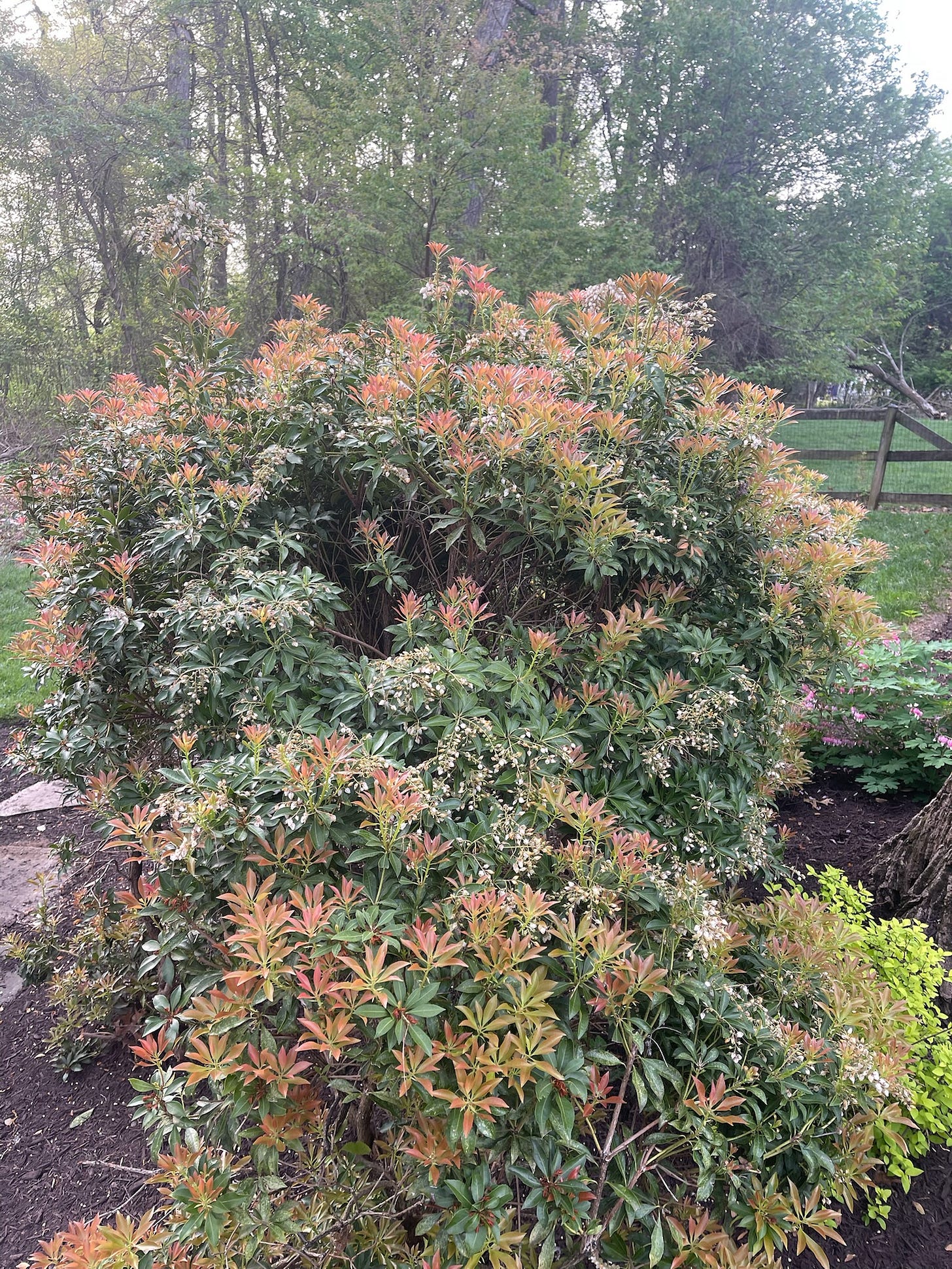Solomon’s Seal has its moment, and other matters.
Readers may remember the post of Nov. 8, 2024, titled Plant Therapy. In another brilliant and courageous display of investigative journalism, I shared with you the transcript from an anger management therapy session with the plant, Solomon’s Seal. Seal was more than a little peeved that its location in the waterfall bed, right next to the two-time Plant of the Year winner, Hot Lips turtlehead, meant that Seal didn’t get the recognition it felt it deserved. I surmise that readers were overwhelmed with sympathy and understanding for this hardworking plant. Seal did exactly what it was asked to do, namely, perform beautifully in a shady spot and provide year-round interest with deep green variegated leaves that turn a brilliant orange-red in the fall.
I am pleased to report that Solomon’s Seal has come out of the gates this year with a vengeance, clearly outshining its bed mate. Hot Lips turtlehead is getting off to a slow start, like many other plants in the garden, due to what I’m told was a tough winter. As the year progresses, I’m sure Hot Lips turtlehead will rally in its annual pursuit of Plant of the Year. But for now, those of you who were rooting for Solomon’s Seal to have its moment can cheer. Sometimes being dependable, doing your job without fanfare, and giving the owner his money’s worth is more than enough. For my part, I hope the therapy sessions are successful and Solomon’s Seal can find a measure of peace being the underappreciated bedfellow that seems to be its lot in life.
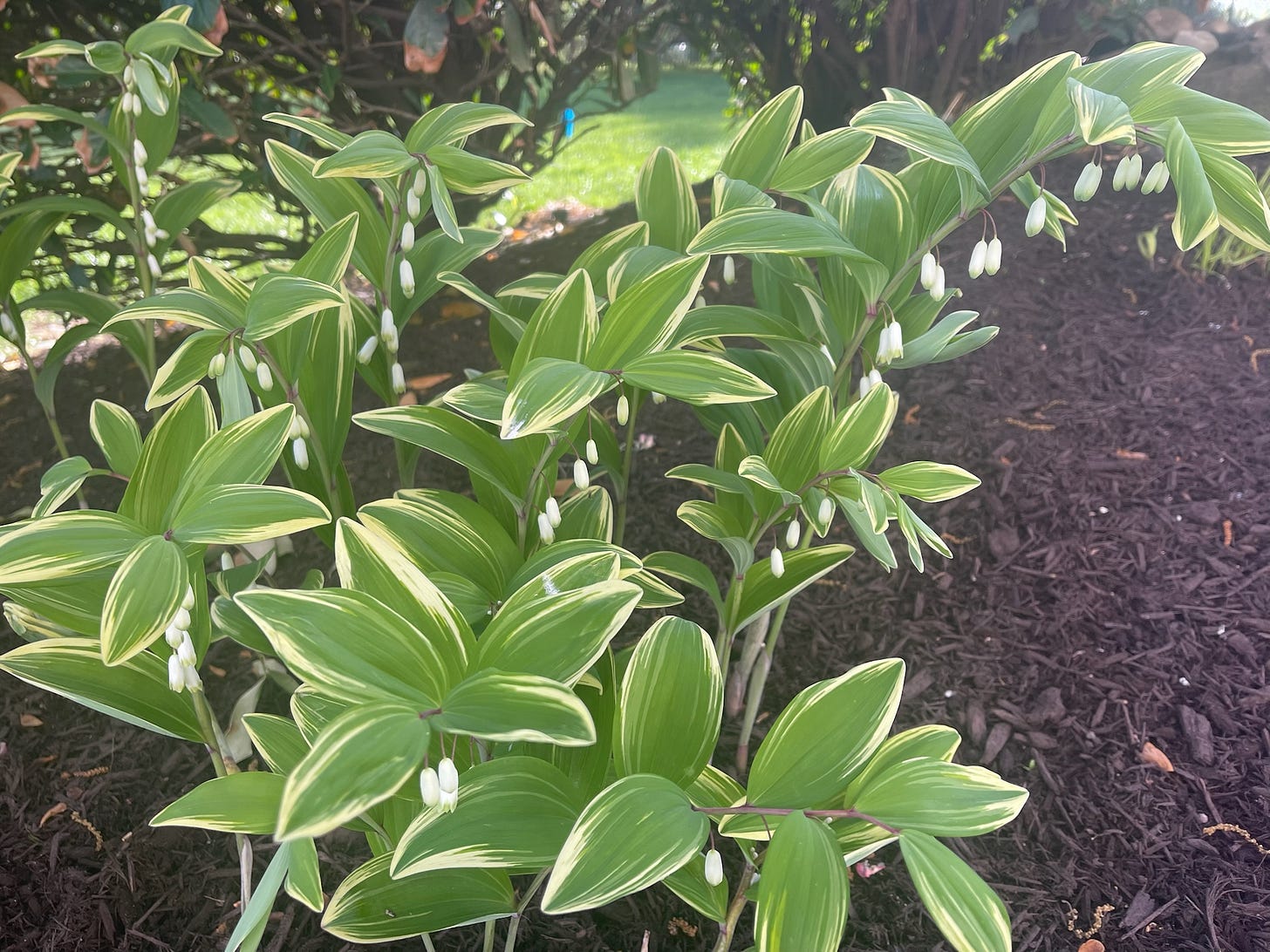
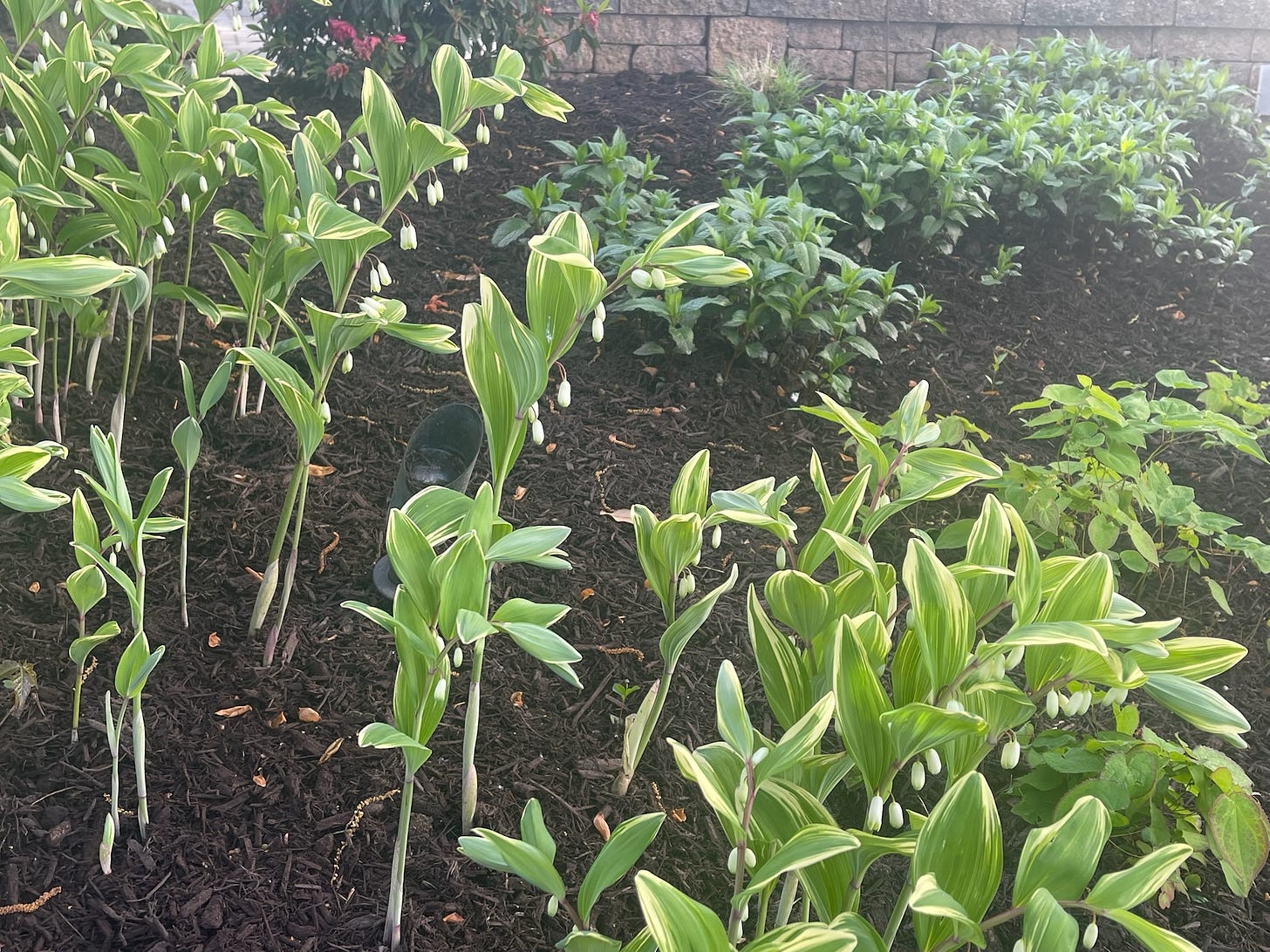
In other news, you may remember me mentioning that a fourth brunnera plant was growing in the Encore azalea bed, and I didn’t know where it came from. Brunnera spread by underground rhizomes or by seeds. Since the new plant is far away from the others, I’m betting this plant is the result of a random seed carried by the wind, animal, or other. I’ve been warned that the offspring might not be as striking as the other brunnera as it matures, but as you can see, it looks like momma and poppa, just a little smaller. By next year, it will take its place at the adult table.

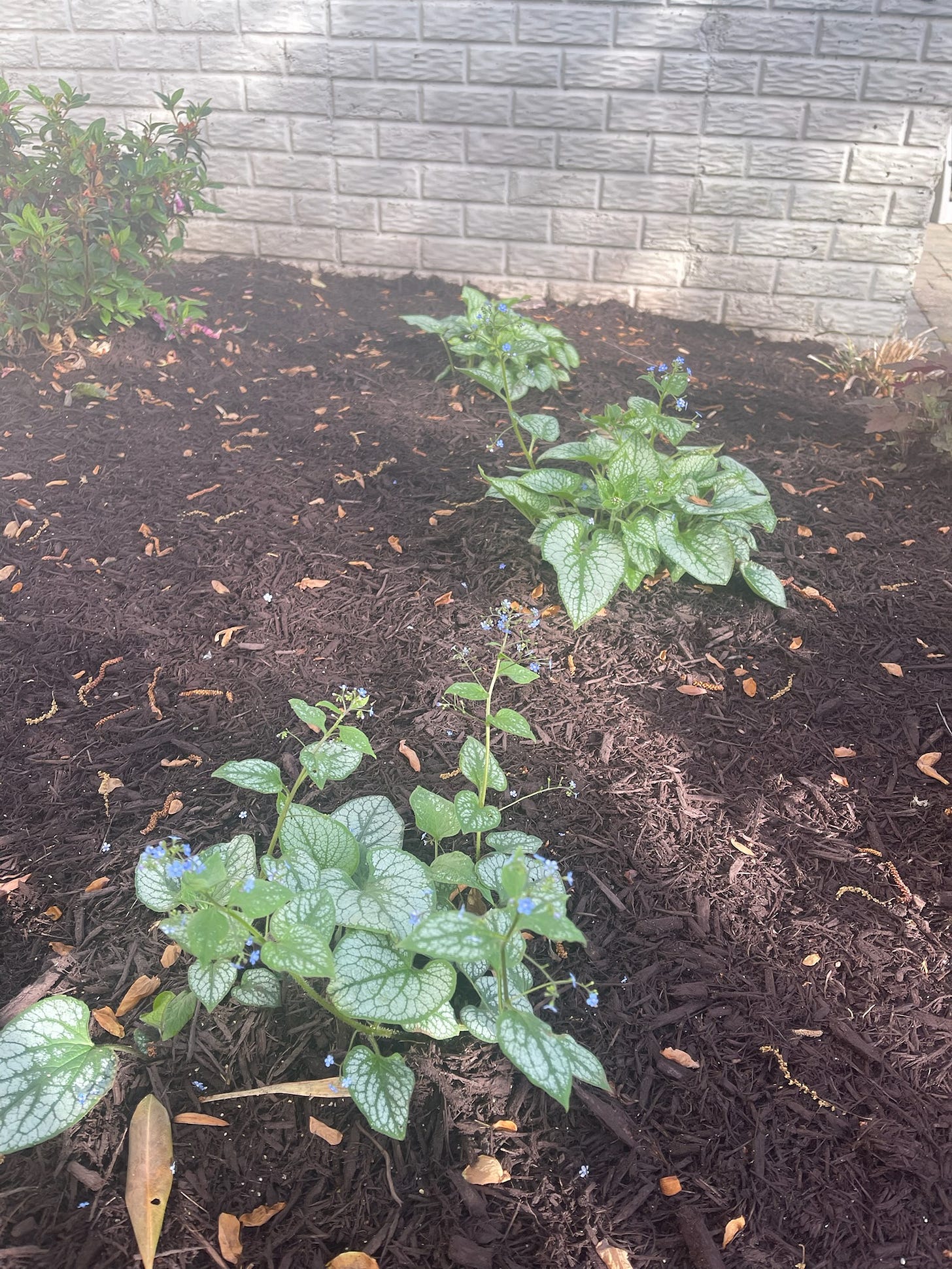
I was trying to follow my new maxim for the year, courtesy of Martha Stewart, “If you don’t like something in your garden, change it,” by transplanting one of the red astilbes in the back bed to a space in the woodland bed under the arborvitae trees. I finally got around to moving one of the astilbes, and what did I see not inches from my hand? A friendly little toad or frog or something. I gently moved the little fella away from where I was digging and congratulated myself for not getting overly worked up about this close encounter with nature. (It was about three inches long and would have made an effective fishing lure.) If you are a reader who knows that this particular animal is poisonous and that I narrowly escaped with my life, please do not write to inform me. I’m nervous enough about Mr. Snake roaming the area without any more tsuris. (loose translation from Yiddish: a pain in the tuches).
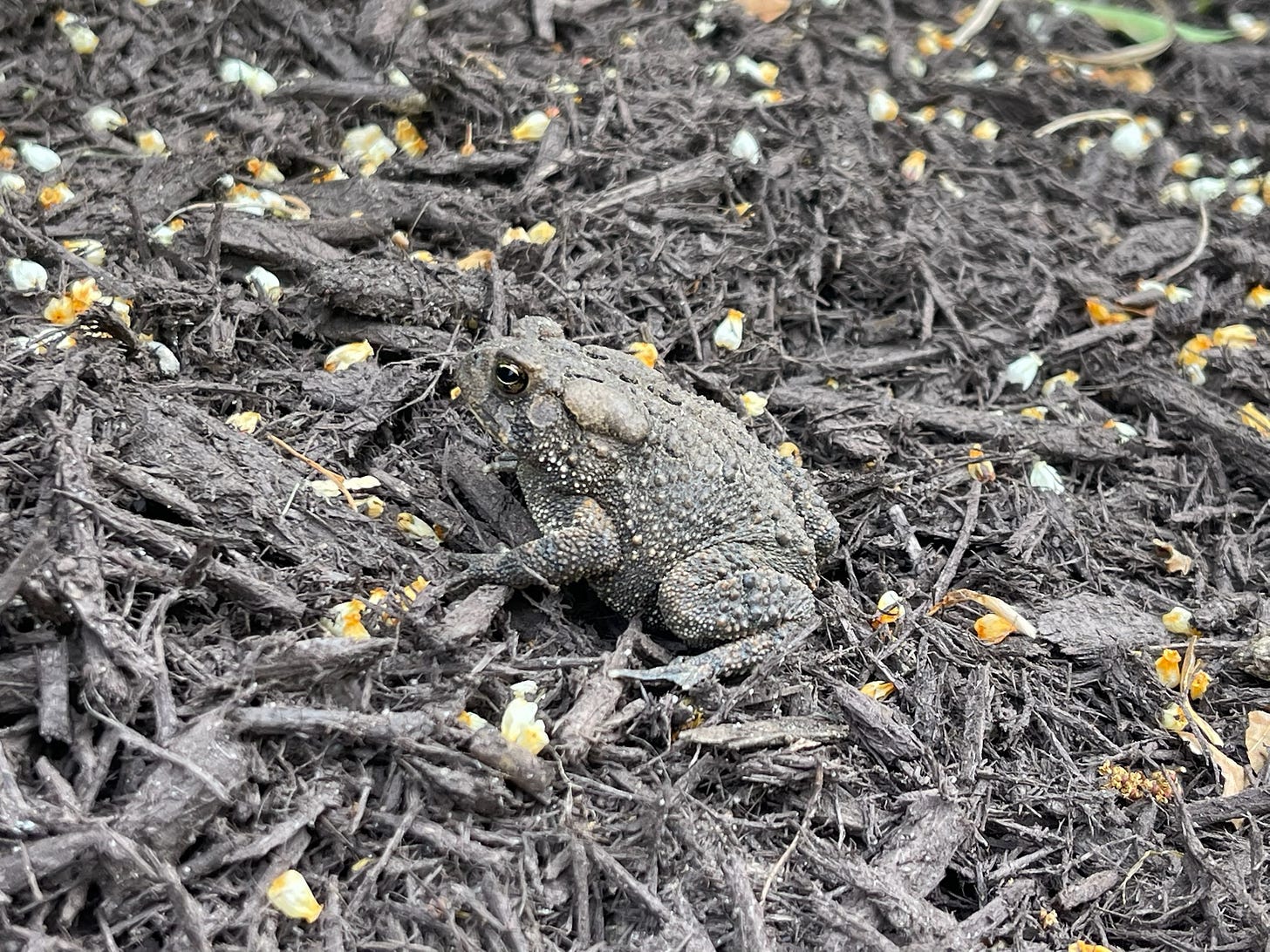
When I patrol the steps bed, I often bemoan the fact that my Lenten rose, a long-time favorite early bloomer in the garden, usually has its flowers facing down. I don’t know why such gorgeous little blooms seem to hang their heads in shame, but they do. If I want a close look at them, I must bend down to their level and tip their heads up for close inspection of the petals. This week while on patrol, I noticed that for some reason the Lenten rose was looking up and the flowers were showing off their subtle, beautiful colors. I couldn’t help but snap a few pictures to share. (Does one “snap pictures” on an iPhone? Probably not.) In my experience, Lenten rose is expensive compared to other perennials -- typically priced for $20 or more. I’m curious to see what happens to the army of baby Lenten roses that spilled out of their mama this spring. Perhaps I can propagate a few of the adolescents later this year. Or I can divide the two I already have early next year. Either way, I’m trying to be a real-live gardener and not just buy a few new ones at the nursery.
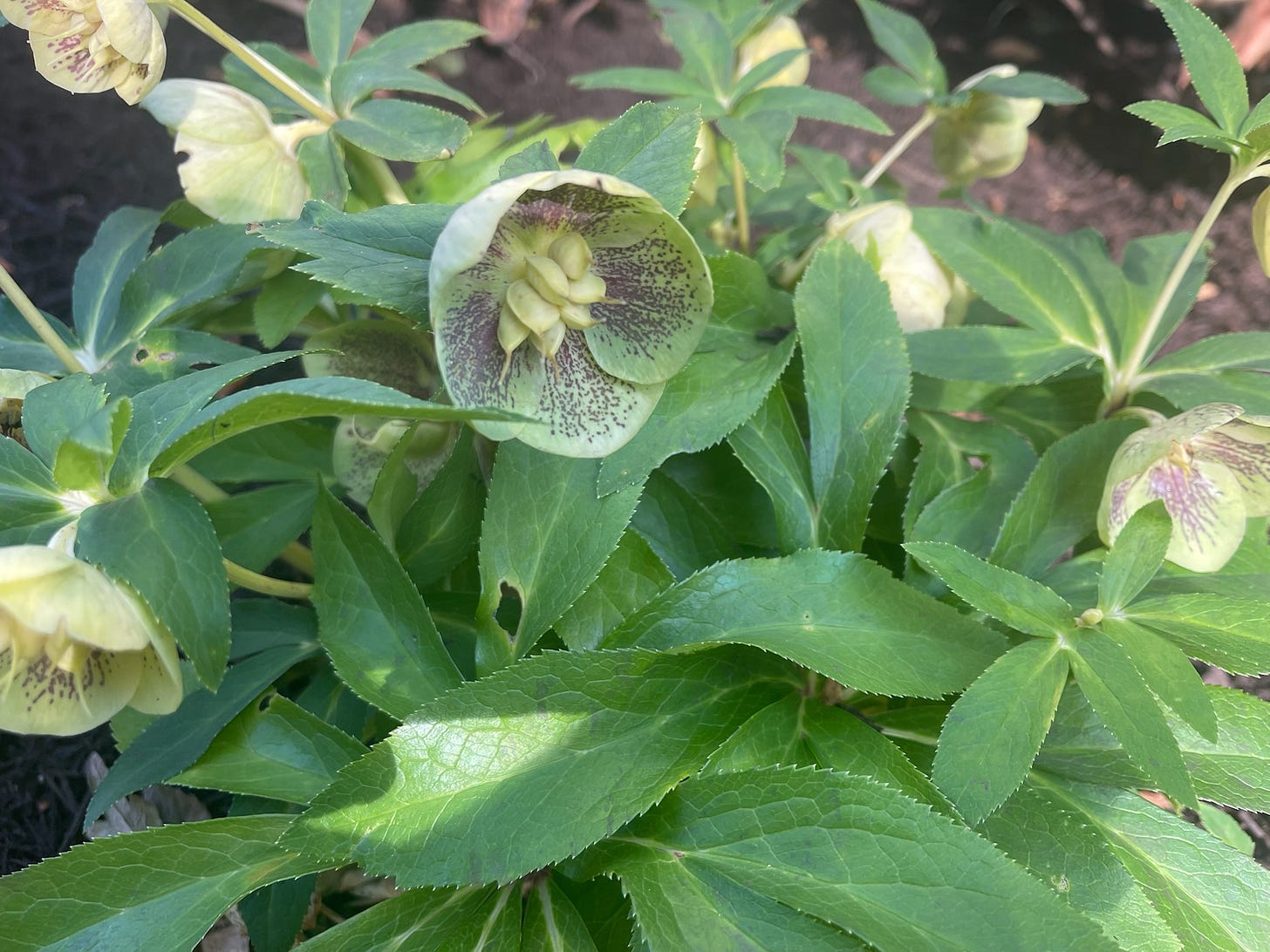
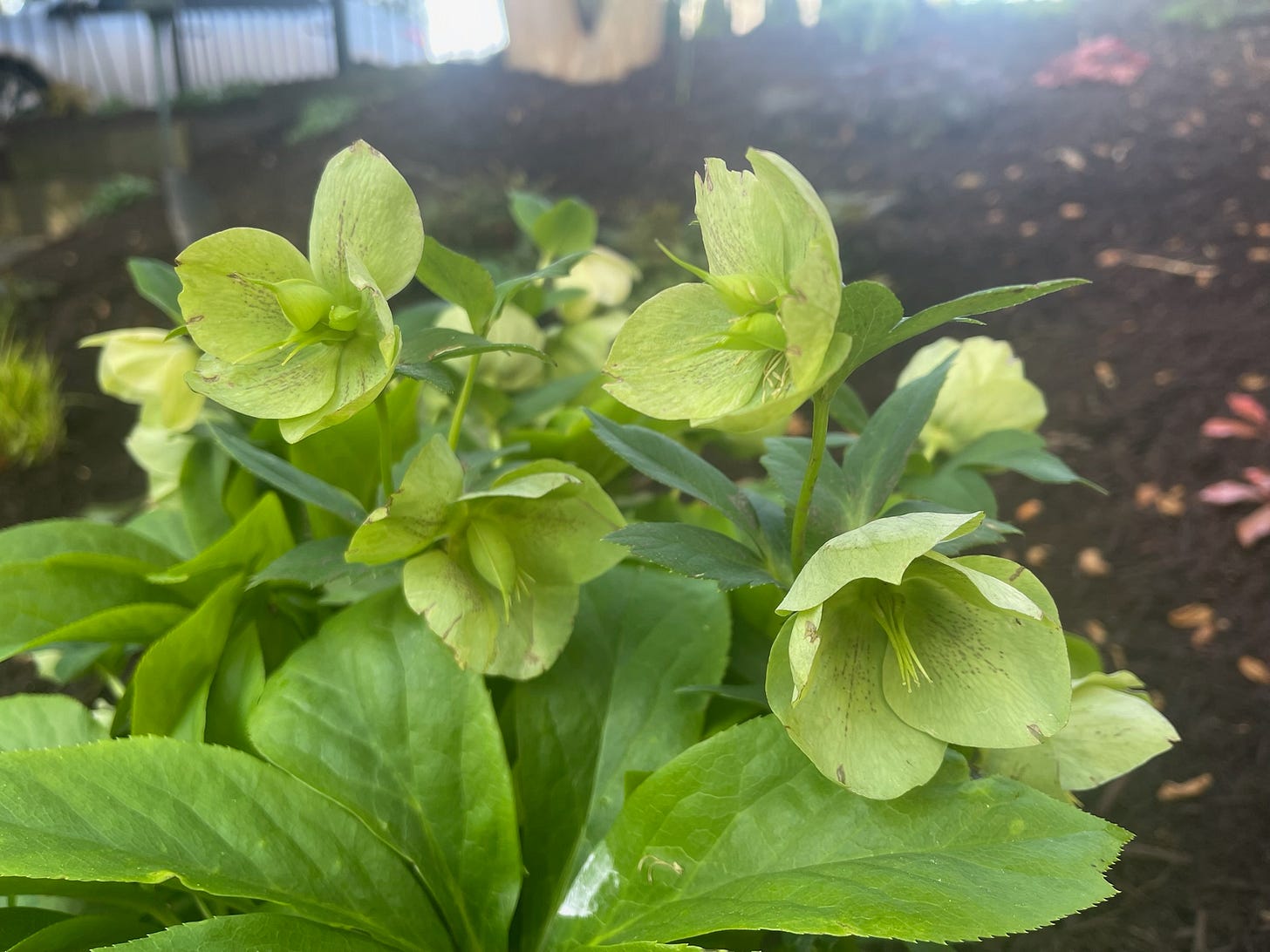
Lastly, I’m pleased to share a few photos of the flowering shrubs in the steps bed. I don’t really think about these plants for most of the year, but they sure grab my attention in spring. They are absolutely stunning. I was curious why so many shrubs have Japanese in their names. Here’s what Google has to say: “Many plants have names related to Japan due to Japan’s rich botanical diversity, extensive gardening history, and significant influence on Western gardening traditions.” And there you have it, folks.
On a sad note, the pulmonaria (lungwort) plants in the steps bed are still a no-show, and I’m going to officially write them off. I will give them another try because I’m stubborn and can’t be taught. My guess is that the plants in the steps bed succumbed to a combination of powdery mildew, which I tried to treat, and a tough winter. They might do well in the partial shade of the waterfall bed behind the cherry laurel bushes. We shall see. Unfortunately, I purchased the plants at Meadows Farms nurseries, which has a ridiculous warranty that requires your plants to conveniently die before November 30 of the year you purchase them. If you are planting in the fall, good luck when perennials don’t show up the following spring.
Time to wrap this up folks. As always, I want you to know how much I appreciate your comments and “likes.” Please share the post with friends and enemies and if you are interested in posts that are safely in the archives click HERE.
I think we are safely past the last frost. Huzzah!




